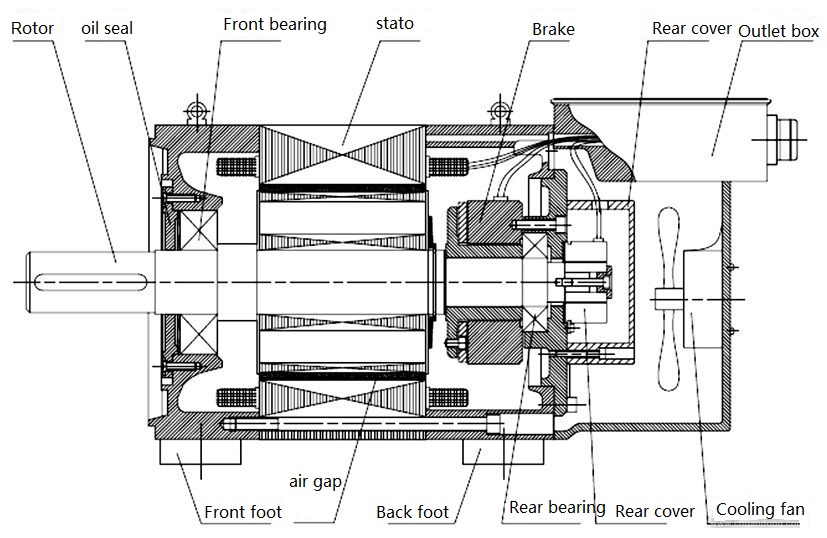1. Working principle of AC servo motor
The rotor inside the servo motor is a permanent magnet. The U / V / W three-phase electricity controlled by the driver forms an electromagnetic field. The rotor rotates under the action of this magnetic field. At the same time, the encoder provided by the motor feeds back the signal to the driver. The driver compares the feedback value with the target value and adjusts the rotation angle of the rotor. The accuracy of servo motor depends on the accuracy of encoder (number of lines).
- Composition and classification of servo system
2.1. Form:Servo system is the general name of the control system with position and angle as the control quantity. The system with position and angle related speed, angular speed, acceleration and force as the control quantity is also included in the servo system.
2.2.Classification:
2.2.1. It is divided into open-loop type and closed-loop type according to the control structure.
2.2.2 According to the classification of driving parts:
2.2.1. AC motor servo system.
2.2.2. Step motor servo system.
2.2.3. DC motor servo system.
3. Characteristics of AC servo motor
3.1. High positioning accuracy
3.2. Fast response.
3.3. The control is convenient and flexible, and the control system is easy to realize.
3.4. There are many models, and different types can be selected according to different application environments.
3.5. Provide full closed-loop control, which can timely monitor the operation status and make appropriate adjustment and transformation.
4. Selection steps of servo control
4.1. Determine mechanical specifications, load, rigidity and other parameters. 4.2. Confirm action parameters, moving speed, stroke, acceleration and deceleration time, cycle, accuracy, etc.
4.3. Select motor inertia, load inertia, motor axis conversion inertia and rotor inertia.
4.4. Select motor rotation speed.
4.5. Select rated torque of motor. Load torque, acceleration and deceleration torque, instantaneous maximum torque and actual torque.
4.6. Select the motor mechanical position resolution.
4.7. Select the motor model according to the above.
Article key words: servo control | servo system | servo motor selection | servo motor classification | servo motor principle | servo motor characteristics
Post time: Mar-04-2020
